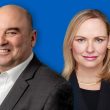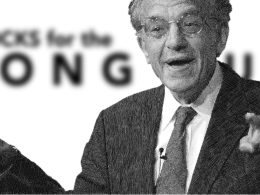by Trader Mark, Fund My Mutual Fund
We'll leave the societal discussions of our currently structured financial incentives for another day [Apr 8, 2008: Hedge Fund Manager - Good Work if You can Get It], but the WSJ reports that John Paulson has surpassed his legendary 2007 haul of $4B, with a $5B payday in 2010. As we've outlined in the past, after betting against the mortgage market, Paulson turned around and bet with the government big time, as moral hazard is the new way to gain epic generational riches. What is interesting is the largest hedge funds have now grown so immense in size, [Mar 8, 2010: List of Largest Global Hedge Funds] they don't even have to have exceptional performance to create once unheard of wealth. Indeed, the average hedge fund in 2010 lagged the S&P 500's performance - by about a third. And lagged the average mutual fund by nearly half. Indeed, once you become a certain size it becomes increasingly difficult to beat the market. [Mar 29, 2010: Are John Paulson's Hedge Funds Now Too Big to Outperform] Whatever the case, with this incentive program, expect a continued march of the country's best and brightest minds into this one niche field.
Via WSJ
- Hedge-fund manager John Paulson personally netted more than $5 billion in profits in 2010—likely the largest one-year haul in investing history, trumping the nearly $4 billion he made with his "short" bets against subprime mortgages in 2007. Mr. Paulson's take, described by investors and people close to investment firm Paulson & Co., shows how profits continue to pile up for elite hedge-fund managers.
- Appaloosa Management founder David Tepper and Bridgewater Associates chief Ray Dalio each personally made between $2 billion and $3 billion last year, according to investors and people familiar with the situation. James Simons, founder of Renaissance Technologies LLC, also produced profits in that range, say investors in his firm.
- Mr. Paulson and his fellow managers seldom take much of their profits in cash. Some of the profits are so-called paper gains, which reflect the rising value of their firms' holdings, and could erode if those investments sour. Other gains come from selling investments, and most of those are rolled back into their funds.
- Assets managed by hedge funds have grown to a near-record $1.92 trillion, up 20% over the past year. Assets jumped almost $150 billion in the fourth quarter alone, the largest quarterly growth on record, according to Hedge Fund Research, Inc.
- Still, the average fund gained just 10.49% last year. That's well below the 15% gain of the Standard & Poor's 500 stock index, including dividends, and the 19% return of the average stock mutual fund, raising questions about whether the industry can profitably invest the influx of new cash.
- Indeed, the enormous gains by Mr. Paulson and the other managers resulted from solid, though not spectacular, performance. Their personal gains came in part from the sheer scale of assets under their control. The largest hedge fund in Mr. Paulson's $36 billion investment portfolio, Advantage Plus, grew 17% last year, while another big one rose 11%, falling below returns for the broader stock market.
- Part of Mr. Paulson's more that $5 billion profit came from his firm's 20% cut of his funds' profits, known in the industry as the "performance fee." Those fees amounted to roughly $1 billion last year, according to a person familiar with the matter. An added plus for Mr. Paulson: A chunk of those profits are treated as long-term capital gains and taxed at a far lower rate than the standard income-tax rate. More than $4 billion came from gains on Mr. Paulson's investments in his funds.
- The performance last year.....paled in comparison to his 2007 returns, when Mr. Paulson made a huge wager against subprime mortgages and his funds scored gains of as much as 590%.
- The hedge-fund business now is so big that some managers are hinting they'll return money to clients instead of investing it. Handling so much cash can make it hard to generate big gains in some trading strategies.
- Mr. Tepper, for example, has told some investors to expect to receive some cash back in 2011. He returned $500 million to investors last year. This year, he may return several billion dollars, according to people close to the matter. Other firms, such as Paulson & Co., have closed certain funds to new investors, but are actively raising new money for other funds.
Copyright (c) Trader Mark, Fund My Mutual Fund













